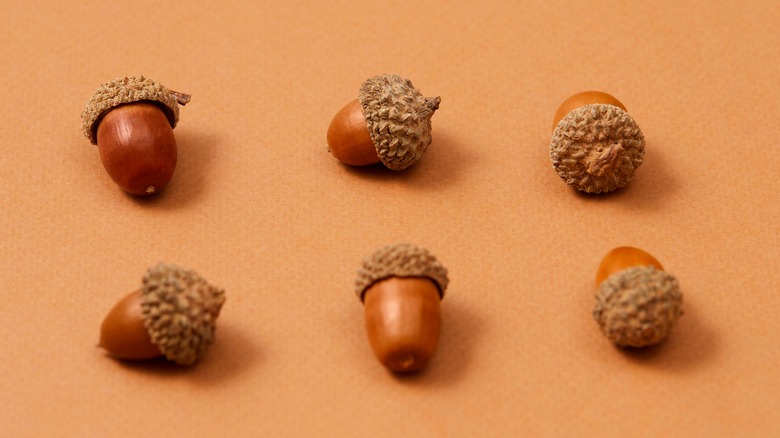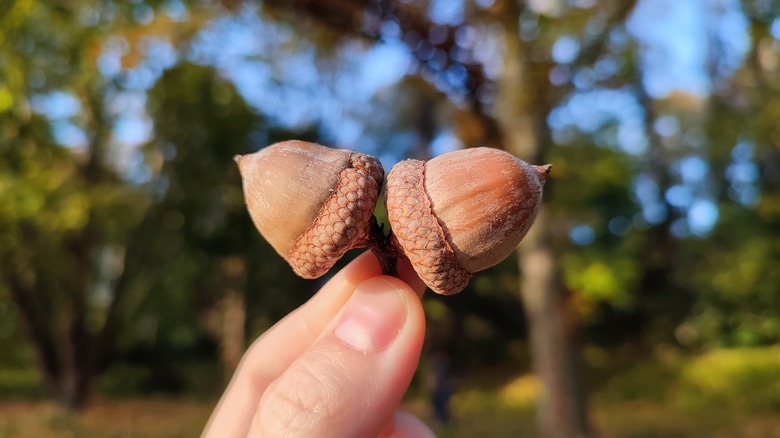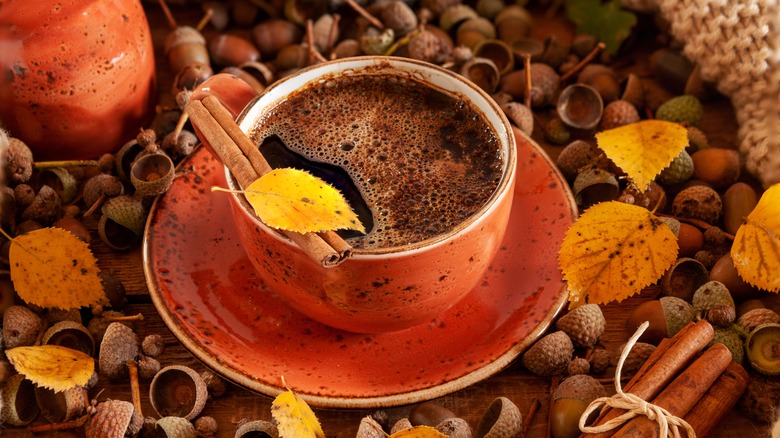Can You Eat Wild Acorns?
Admit it: You've definitely, at least once, looked at an acorn and wondered if it was edible for not only squirrels but us humans, as well. Or maybe the thought has never occurred to you because you're not feral. In any case, you're thinking about it now. And fortunately, we have the answer.
It turns out that wild acorns are indeed edible, kind of — but not straight from the tree. Raw wild acorns contain a significant amount of tannins, which impart a bitter flavor and are toxic to humans in high quantities. (You've probably heard of tannins in the context of wine, where they contribute bitter, dry notes to the wine's overall bouquet, but don't worry — these aren't concentrated enough to be toxic, and in small amounts can even have health benefits. Confusing, we know.)
The good news for any hungry foragers out there is that acorns can be made edible by leaching the tannins out. Once they are prepared safely, acorns can actually offer some health benefits of their own — and, according to some, are very tasty.
Leach it out
Don't worry, you're not the first human to try eating acorns: There's evidence that people in ancient Japan, Greece, England, and Iberia ate acorns, particularly relying on them when food was scarce and grains were harder to come by. They're also used in traditional Korean and indigenous North American dishes, many of which are still eaten today. But how do you go about making them safe for consumption?
Your first step in preparing acorns is, as you can probably guess, to shell them. The shells can be tough, often a lot harder to crack than more commonly eaten nuts, so be prepared to use some elbow grease. Some people find them easier to crack once they've been frozen, so you can always try that if they're proving very stubborn.
Once they're shelled, they need to soak. For this, you'll use either hot or cold water, depending on how you're planning to prepare them. If you're going to grind them up into acorn flour, you're better off soaking them in cold water so as not to damage the starches contained within. If you're going to use them in larger chunks or whole, you can use boiling water.
From here, it's not dissimilar from rinsing dye out of your hair: The water will turn brown and when it does, drain it out and soak the acorns again with new water. Repeat this process until the water runs clear. Once it does, they're ready to be used.
Acorn coffee, anyone?
If you grind the acorns up into a powder, you can use it as a substitute for flour in bread, cakes, or most other foods that typically call for wheat flour. Just be prepared to experiment and possibly troubleshoot a bit, as all flour alternatives behave a little differently under different circumstances. Another option is to roast them, which you can do by simply laying them out on a baking sheet, seasoning as desired, and cooking for 15-20 minutes at 375 degrees Fahrenheit. Some people also like to roast, grind, and brew them like coffee beans to make a hot drink.
Safely prepared acorns contain a number of nutrients, including vitamins A and E, potassium, and iron. There's some evidence that they may be good for gut health, and they also contain antioxidants, which can help your body protect itself from disease. So, if you have an oak tree in your vicinity, you also have access to a free, plentiful, and healthy snack — provided you take the proper care to leach them before eating.


